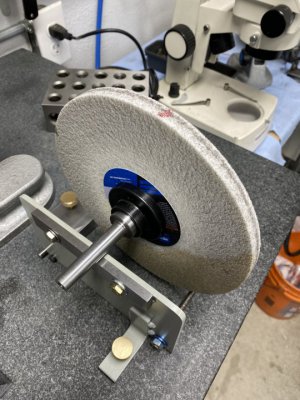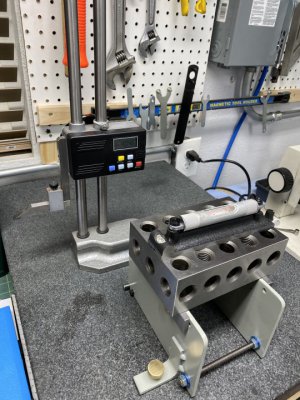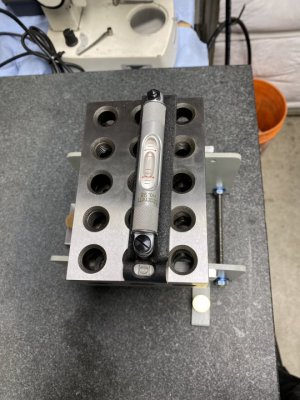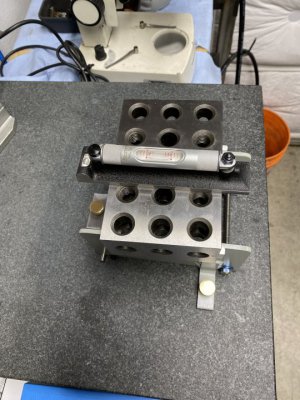- Joined
- Mar 26, 2018
- Messages
- 8,666
I don’t know the process but this method seems to work.
I elevated the device on the three point brass screws.
Then I used my surface plate and a height gauge to get the ground stock at the same height.
I then used my 6” Starrett level to get squared away.
I mounted a wheel on the arbor and checked the balance.
It repeats! I found the same results over and over, marked in red as the light spot.
I elevated the device on the three point brass screws.
Then I used my surface plate and a height gauge to get the ground stock at the same height.
I then used my 6” Starrett level to get squared away.
I mounted a wheel on the arbor and checked the balance.
It repeats! I found the same results over and over, marked in red as the light spot.




